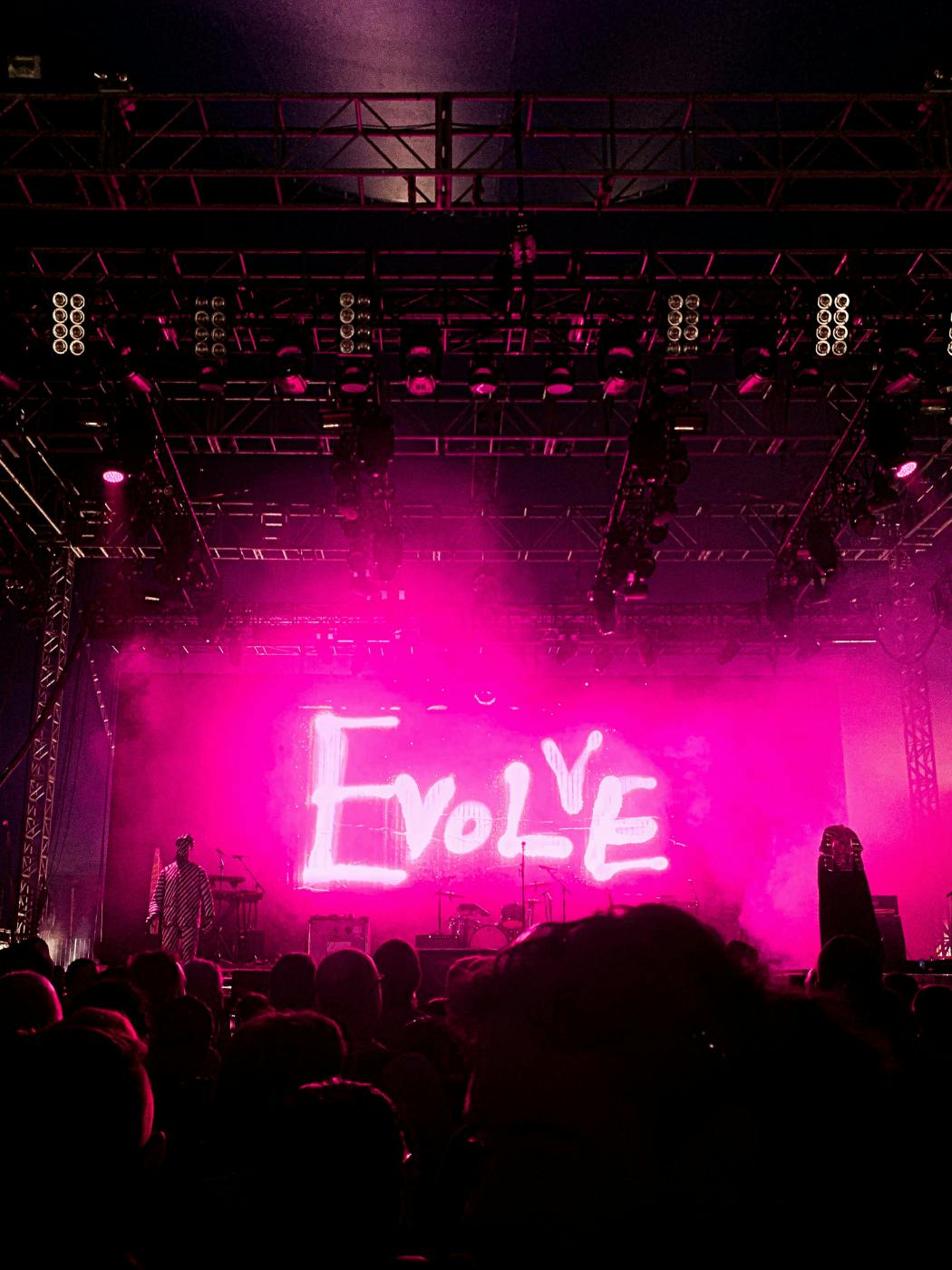
In this hyper-saturated digital landscape, many brands struggle to make their message heard. With so much competition, information overload can leave audiences disengaged, overwhelmed, and, worse, uninterested. But what exactly is digital overload, and how can businesses navigate this challenge?
Saturday in the afternoon, I was doing some chores, straightening up the desk, dusting the room, watering the plants, etc. It was an easy day, and my mind could have been free and happy, but instead of allowing that, while I did my domestic deeds, I had news on the TV. I had news on the radio; I had news on my open computer. So, while I moved along, crossing off tasks on ym to-do list, I allowed my mind to passively digest tons and tons of news. Content was coming at me from all directions, bombarding my brain and making my stomach turn.
Now, my to-do list was not physically demanding, and yet, when I was done, I was exhausted. Why? A little straightening, a little dusting, putting books back on shelves, sweeping the kitchen floor, nothing strenuous or … wait a minute. All that content, bombarding my ears and filling my head, could that be the cause for my exhaustion?
In a word, yes. It was too much. Too much information, too much content, for ym poor brain to handle and digits and make sense of. I know this, and yet, I continued to listen and watch and absorb. Why? Because the internet is the most evil place on earth? Well, yes and no. But, I allowed all that stuff to hit me and seep in because all that information, disinformation, and misinformation is there, right there, online, anytime and place. The internet will always vomit up more information than you can possibly handle or even need.
The internet is a never-ending firehose of information. Every second, new content floods our screens—ads, emails, social posts, breaking news, and cat videos (because, of course). For businesses, this digital noise isn’t just a distraction—it’s a battle for attention, clarity, and connection.
In this hyper-saturated digital landscape, many brands struggle to make their message heard. With so much competition, information overload can leave audiences disengaged, overwhelmed, and, worse, uninterested. But what exactly is digital overload, and how can businesses navigate this challenge?

What is Digital Overload?
Digital overload, also known as information overload, occurs when individuals are bombarded with more data than they can effectively process. This excess of content leads to cognitive fatigue, decision paralysis, and a decline in information retention. Instead of being informed, people feel drowned in a sea of notifications, emails, ads, social media updates, and competing digital content.
This phenomenon is exacerbated by the sheer volume and speed at which digital information is produced. The modern individual is expected to consume, process, and respond to an ever-growing influx of data, leading to stress, decreased productivity, and even negative mental health effects. The more content that demands attention, the less likely a person is to absorb and retain meaningful information.
Additionally, the pressure to stay constantly connected creates a cycle where individuals feel the need to be "always on," checking their devices frequently for updates. This leads to mental exhaustion and the inability to focus on deep, meaningful tasks. Businesses, too, struggle in this landscape, as traditional marketing tactics often get lost in the noise. The challenge is no longer about producing more content but ensuring that content is meaningful, relevant, and effectively delivered.
Digital overload doesn’t just affect individuals—it impacts businesses and organizations as well. Employees struggling to keep up with constant communication and data streams can suffer from burnout and reduced efficiency. Brands find it increasingly difficult to break through the clutter and engage audiences meaningfully. As information continues to compound, cutting through the noise becomes not just a challenge but a necessity.
Examples of Digital Overload
- Endless Email Notifications – Professionals check emails up to 15 times per day, with inboxes flooded by promotional emails, internal communications, and spam. The constant influx of emails makes it difficult to prioritize, respond, and manage communications effectively, leading to unnecessary stress and decreased productivity.
- Social Media Saturation – The average person scrolls the equivalent of 300 feet of content daily, absorbing thousands of posts, tweets, and reels that they rarely retain. The dopamine-driven cycle of social media engagement encourages continuous scrolling, making it harder for users to focus and engage with valuable content meaningfully.
- Push Notifications Overload – Between news alerts, app notifications, and promotional messages, users can receive over 50 notifications a day, fragmenting their focus. Frequent interruptions make it difficult to concentrate on tasks, reducing deep work and increasing stress levels. Over time, individuals may develop "notification fatigue," leading them to ignore or disable critical updates altogether.
- Advertising Overwhelm – Consumers are exposed to between 6,000 and 10,000 ads daily, leading to ad fatigue and diminished effectiveness of marketing efforts. With so many brands vying for attention, many individuals have developed subconscious filtering mechanisms, tuning out digital advertisements altogether. This makes it harder for businesses to connect with their audiences and forces marketers to refine their strategies to be more engaging and relevant.
Digital overload is a pervasive issue that affects every aspect of modern life, from workplace productivity to personal well-being. Addressing this challenge requires a combination of strategic communication, mindful technology use, and innovative digital engagement approaches that prioritize clarity and value over sheer volume.

Transitioning to Action: How Businesses Can Navigate Digital Overload
Understanding digital overload is just the first step. The real challenge lies in addressing it effectively. Businesses must rethink how they engage with their audience, ensuring that their content and messaging provide real value rather than contributing to the noise.
This requires a combination of thoughtful content strategy, intuitive design, and data-driven personalization. Instead of overwhelming users with more information, the goal should be to refine and optimize communication to foster engagement without excess. The next section outlines key strategies businesses can adopt to navigate the complexities of digital overload and create more meaningful connections with their audiences.
Key Strategies for Businesses
Clarity Over Clutter
In a world where information overload is rampant, clarity is a competitive advantage. Brands that deliver their messages with precision and simplicity stand out. This means cutting through unnecessary jargon, avoiding overly complex explanations, and prioritizing direct, engaging language that instantly communicates value.
Clarity also extends beyond words. The way a website is structured, the flow of an email, and even the simplicity of a call-to-action all contribute to whether an audience engages or moves on. Businesses must refine their content to remove unnecessary distractions and provide users with the fastest route to the information they need.
Design with Intent
A visually stunning website or app is only effective if it serves the user well. Every design choice should be purposeful, guiding visitors toward their goals seamlessly.
Intentional design includes prioritizing user experience (UX), ensuring interfaces are intuitive, navigation is effortless, and distractions are minimized. It means leveraging white space effectively to prevent visual overwhelm, using clear typography for easy readability, and employing strategic visual hierarchy to emphasize key messages. When a design is aligned with user behavior and needs, it reduces frustration and increases engagement.
Storytelling That Sticks
People connect with stories, not just facts. A well-crafted narrative can make a brand memorable and meaningful. Rather than bombarding audiences with features and specifications, businesses should focus on telling stories that evoke emotion and create a personal connection.
Strong storytelling weaves together brand values, customer experiences, and compelling narratives that resonate. Whether it’s through case studies, testimonials, or immersive brand experiences, stories give audiences a reason to care. The key is authenticity—forcing a narrative rarely works, but sharing genuine experiences and missions builds trust and long-term engagement.
Cutting Through the Noise
Information overload isn’t just about too much content—it’s about too much irrelevant content. Businesses that want to engage their audiences need to be strategic about how they communicate. Here’s how companies can refine their digital strategies:
1. Strategic Content Creation
- Every piece of content should have a purpose. From blog posts to web copy to ad campaigns, focusing on quality over quantity ensures each word carries weight.
- Messaging should be relevant and actionable, providing value to the audience instead of just contributing to digital clutter.
2. Smart Design, Not Just Pretty Design
- A visually stunning website means nothing if users can’t find what they need. Blending aesthetics with functionality ensures that every element serves a strategic goal.
- UX/UI strategies should prioritize easy navigation, minimizing distractions, and leading users to what matters most.
3. Data-Driven Decisions
- Avoiding guesswork by analyzing audience behavior through analytics, heatmaps, and user tracking ensures content and design choices are backed by real insights.
- Assessing audience behavior helps eliminate ineffective messaging and focus on content that truly engages.
4. Personalization at Scale
- Today’s consumers expect tailored experiences. AI and automation can be leveraged to deliver personalized interactions that feel human, not robotic.
- Custom messaging and dynamic content ensure that users receive information that’s relevant to their interests, reducing cognitive overload.

The Future of Digital Engagement
As technology evolves, the competition for consumer attention will only become fiercer. Brands will need to find innovative ways to engage audiences without overwhelming them. The focus will shift from producing more content to producing the right content—concise, relevant, and strategically delivered.
New technologies such as AI-driven content recommendations, interactive experiences, and voice search optimization will continue to change how audiences consume information. Brands that adapt to these emerging trends while maintaining a human touch in their messaging will be the ones that thrive. Engagement will no longer be about who can shout the loudest but about who can provide the most value with the least friction.
How ThoughtLab Helps Cut Through the Noise
At ThoughtLab, we understand that in a world overloaded with digital distractions, businesses need more than just content—they need clarity. Our approach is centered on delivering strategic, well-crafted digital experiences that captivate audiences without overwhelming them.
By leveraging cutting-edge technology, refined storytelling techniques, and data-driven design, we help brands craft messages that resonate, simplify user journeys, and create experiences that feel intuitive and engaging. Our work isn’t about adding to the digital noise; it’s about making sure your voice is heard in a way that truly matters.
The digital landscape is constantly evolving, but one truth remains: simplicity and clarity will always win. If you're ready to refine your digital strategy and make an impact, let’s talk.

